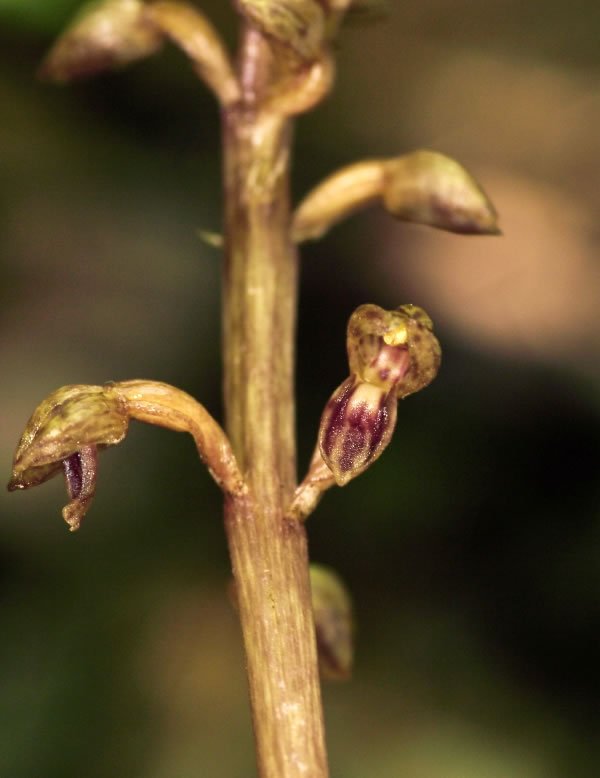Corallorhiza bentleyi - Bentley’s coralroot
Bentley’s coralroot orchid is an herbaceous, perennial wildflower with a limited distribution near the West Virginia and Virginia border. First discovered in July 1998, Bentley’s coralroot is known from only several populations. Bentley’s coralroot occurs above ground as a single flowering scape.
Corallorhiza bentleyi (Corallorhiza - corallion - coral and rhiza - root; coralroot; and bentleyi - for the discover Stanley Bentley) refers to the underground stems, rhizomes, appearing like an ocean coral.
Corallorhiza bentleyi attains a height of 20 centimeters or less. The dark, reddish leaves are reduced to sheaths surrounding a simple scape (stalk of an inflorescence). The flower stalk is reddish to yellowish brown as the flower stalk increases in height. The inflorescence is a lax to dense raceme of few to 20 converging but not actually closed flowers. Individual flowers are similarly colored as the flowering stalk; occasionally the corolla is yellow, lacking the three reddish purple veins. Perianth segments are three veined with the labellum displaying three moderately prominent, dark reddish-purple veins that serve as pollinator guides. The fruit is a reflexed capsule. Corallorhiza bentleyi flowers in midsummer.






